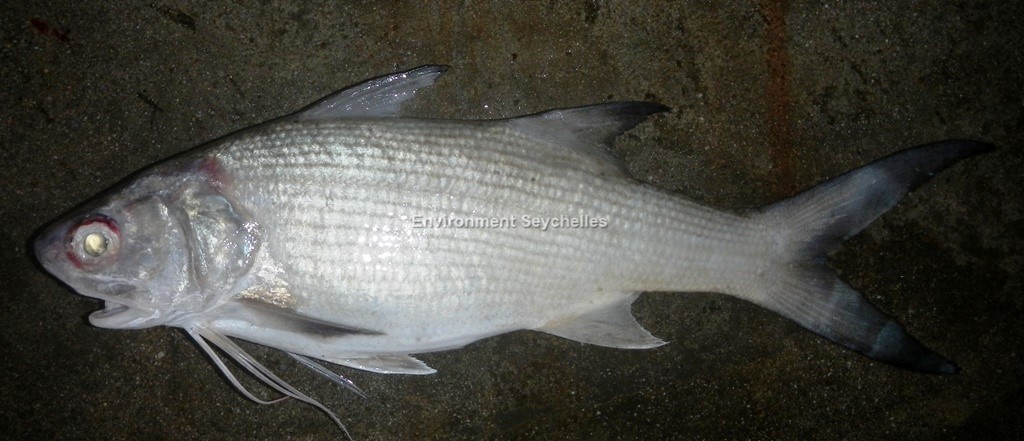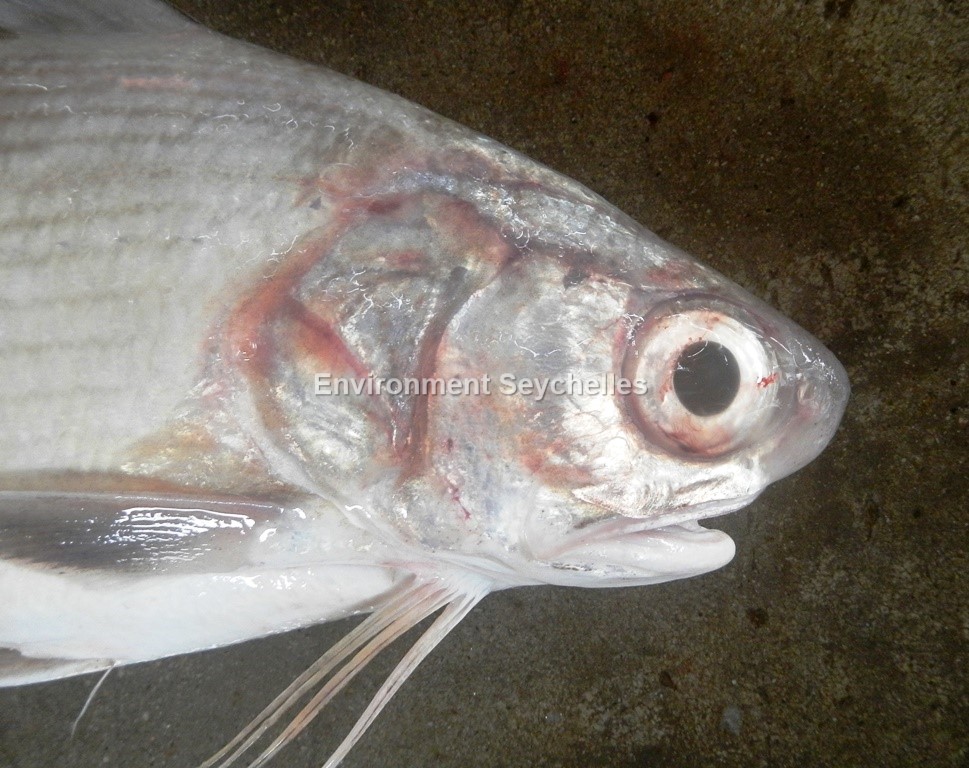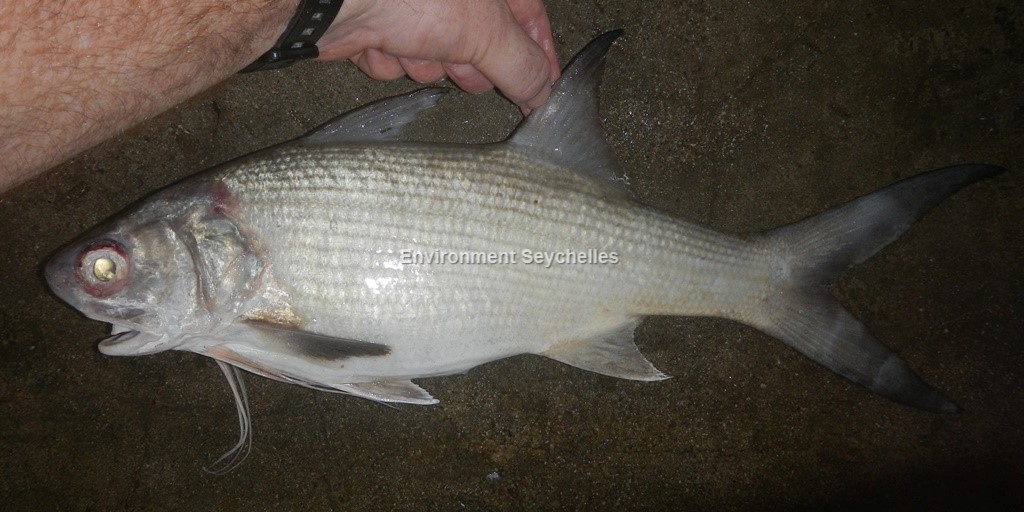Description:
Dorsal spines: 9; Dorsal rays: 13; Anal spines: 3; Anal rays: 11.
Moderately full-bodied, laterally compressed medium-sized species. Blunt conical snout, projecting beyond the large mouth. Maxilla reaching well behind eye to level of posterior margin of adipose eyelid. Lip on lower jaw well developed. Posterior margin of preopercle serrated. 6 pectoral filaments: first shortest not reaching to level of pelvic-fin origin, second to fifth pectoral filaments extending beyond level of pelvic-fin origin; sixth pectoral filament longest. Pectoral fin tip not reaching to level of posterior tip of pelvic fin. Caudal fin deeply forked, lobes not filamentous; upper lobe longer than lower.
Colour. Upper sides of head and trunk tinged silvery brown, becoming more silver on lower sides; occasionally with several faint dark stripes along longitudinal scale rows above and below lateral line. Dorsal fins light grey with dusky distal portions. Second dorsal higher than first. Pectoral fin dark grey, filaments white. Anterior part of pelvic fin greyish black, remainder of fin white. Posterior ray of anal fin white, remainder of fin grey. Caudal fin greyish-black.
Size:
Maturity: Lm unknown. Range unknown. Max Length: 61cm TL.
Habitat and Ecology:
Occurs along shallow, sandy and rocky coastal beaches, in lagoons and near reef areas in the vicinity of oceanic islands, frequently in zones of turbulence (depth 1-50m, usually 20-50m). Feeds mainly on crustaceans and teleosts. Schooling species. Matures first as males at between 20 and 25 cm fork length, subsequently transforming into functional females at between 30 and 40 cm fork length following a hermaphroditic stage.
Fishery Status:
This species is not protected or subject to fishery regulations. It is caught in net fisheries, but is an uncommon component of the catch.
Notes:
References:
Froese, R. & D. Pauly. Eds. 2019. FishBase. https://www.fishbase.se/summary/6416 (07/08/19).
Motomura, H. (2004). Threadfins of the world. An annotated and illustrated catalogue of polynemid species known to date. Family Polynemidae. FAO Species Catalogue for Fishery Purposes. No. 3. Rome, FAO. 2004. 117 p., 151 figs, 6 pls. ISBN 92-5-105128-3
Citation:




There are no comments